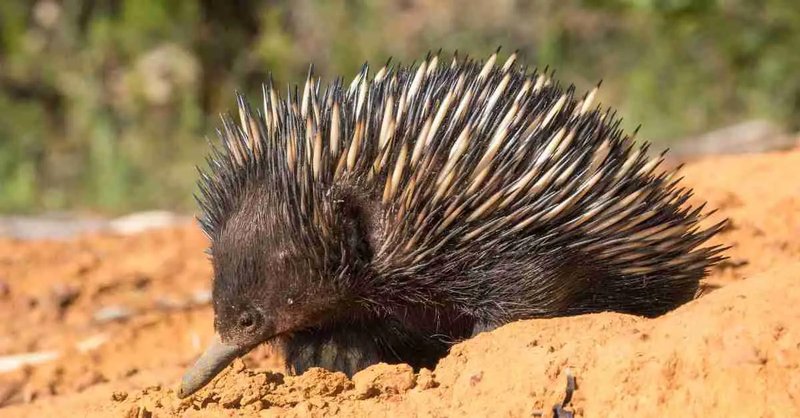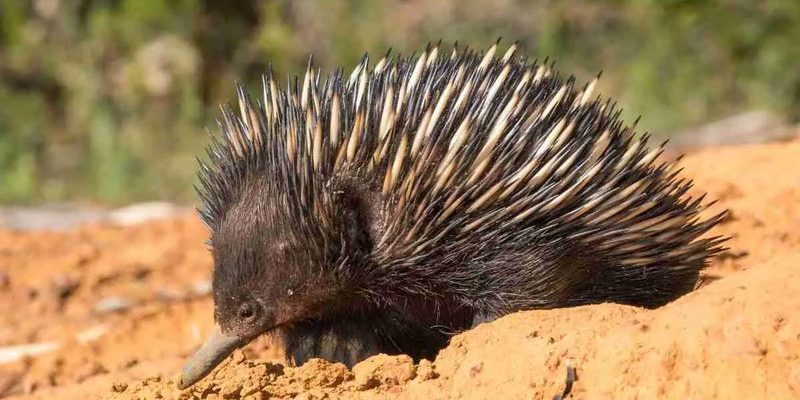
Echidnas are often an overlooked species when it comes to understanding animal intelligence. Part of this comes from their shy nature and their habitat choices, which don’t always put them in the spotlight. But even if they’re not household names like dogs or cats, echidnas have cognitive skills that are worth appreciating. So, grab your favorite coffee, and let’s explore what makes this little creature tick.
The Basics of Echidna Intelligence
To understand how smart an echidna is, we first need to grasp what intelligence means in the animal kingdom. Intelligence isn’t just about problem-solving or learning new tricks; it also includes how animals interact with their environment, find food, and avoid predators. Echidnas are pretty good at all of these things.
Echidnas have been observed using tools, albeit in their own way. For instance, when searching for ants and termites, they might dig with their snouts or use their claws to tap open burrows. This tool-use behavior indicates a level of cognitive adaptability that is impressive, considering how specialized their diet is. It’s not unlike watching a toddler learn how to use a fork for the first time—there’s a certain charm in discovery.
Moreover, echidnas have an excellent *sense of smell*, which plays a crucial role in their hunting strategies. Their nostrils are highly sensitive, allowing them to sniff out food even buried underground. Imagine walking into a bakery and immediately knowing where the freshly baked bread is hiding—that’s a hint of how echidnas navigate their world. This ability is essential for their survival and showcases their intelligence in finding food sources.
Social Behavior and Learning
Echidnas are generally solitary animals, meaning they prefer to keep to themselves rather than hang out in large groups. Still, they exhibit some interesting social behaviors when mating season rolls around. During this time, males often compete for the attention of females, and you might see a bit of a parade as they chase each other around.
While they may not be social butterflies, their interactions suggest they have a good understanding of each other’s behaviors. They can recognize different individuals and respond accordingly. This ability to recognize and adapt to different social cues shows that echidnas possess a certain level of social intelligence within their limited social structure.
It’s also worth noting that echidnas can learn from experience, even if it’s not as flashy as what you’d see in more social species. For instance, if an echidna encounters a situation where it feels threatened, it might change its behavior the next time it faces a similar situation. Think of it like how you might learn to avoid bumping into a wall after doing it a couple of times. This kind of learning is a sign of cognitive ability.
Cognitive Skills: Navigation and Problem Solving
Navigating their environment is another area where echidnas shine. They’re equipped with excellent spatial awareness, which helps them determine the best routes to find food or avoid danger. Some studies suggest that their brains have developed to handle the unique challenges of their habitats.
Echidnas also show signs of problem-solving ability. For example, when faced with obstacles while foraging, they may try different tactics to reach their meal. This might involve rearranging their body or figuring out how to dig deeper. It’s like watching a child figure out how to build a tower with blocks—there’s trial and error, and they often find ways around obstacles.
The way echidnas explore new environments also speaks volumes about their intelligence. They tend to investigate their surroundings thoroughly, using both their noses and paws to understand what’s out there. This curiosity is a strong indicator of cognitive engagement and adaptability.
Environmental Adaptations and Survival Skills
Echidnas are perfectly adapted to their environments and have a set of unique survival skills that demonstrate their intelligence. For instance, their spiny quills act as a defense mechanism against predators. This isn’t just a passive tactic; it’s a smart evolutionary strategy that helps them avoid danger effectively.
When faced with threats, echidnas can curl into a ball, exposing their quills to any would-be attackers. It’s an instinctual behavior that clearly shows they can instinctively respond to danger, which is a crucial aspect of survival.
Additionally, echidnas can dig rapidly and create burrows or hollows to shield themselves from harsh weather. So, they’re not just about quills and cuteness; they have practical skills that keep them safe and cozy. Imagine having a local café where you could duck in to escape the rain—those burrows serve a similar purpose.
Comparing Echidna Intelligence to Other Animals
It’s natural to wonder how echidnas stack up against other animals in terms of intelligence. While they may not have the same level of social intelligence as dolphins or the problem-solving skills of primates, they possess a unique blend of abilities that are perfectly suited to their lifestyle.
For instance, crows are often hailed as some of the smartest birds, capable of using tools and solving puzzles. Echidnas may not do exactly the same things, but their tool use in finding food and their ability to adapt to environments show a different form of intelligence. It’s like comparing apples and oranges—each has its own strengths.
Even though echidnas are primarily solitary creatures, their strategies for survival, like foraging techniques and navigation skills, highlight a type of intelligence that is equally compelling. It’s about appreciating the unique talents of each species rather than simply ranking them.
The Role of Echidnas in Ecosystems
Understanding echidna intelligence goes hand-in-hand with recognizing their role in the ecosystem. As foragers, they dig through the soil, helping to aerate it and promote healthy plant growth. This behavior contributes to nutrient cycling in their habitats, showcasing how their actions impact the environment around them.
Echidnas also help control insect populations, as they primarily feast on ants and termites. By keeping these populations in check, they play an essential role in maintaining ecological balance. Their feeding habits show an understanding of their place in the ecosystem, highlighting their importance in nature.
In this way, the intelligence of echidnas extends beyond individual survival and boils down to their contributions to the wider world. Their behaviors enrich the environments they inhabit, showing that intelligence in the animal kingdom isn’t just about brainpower—it’s about the impact those animals have on their ecosystems.
So, how smart is an echidna? While they might not fit into the box of “traditional intelligence” that we often think of, they certainly demonstrate an impressive range of cognitive abilities and behaviors. From their skillful foraging techniques to their adaptability in social interactions, echidnas are truly remarkable creatures.
In the end, appreciating echidnas and their unique intelligence is about recognizing their place in our world. They may be spiky and shy, but they play crucial roles in their ecosystems and show that intelligence comes in many forms. The next time you come across an echidna, remember that there’s much more to them than meets the eye.

